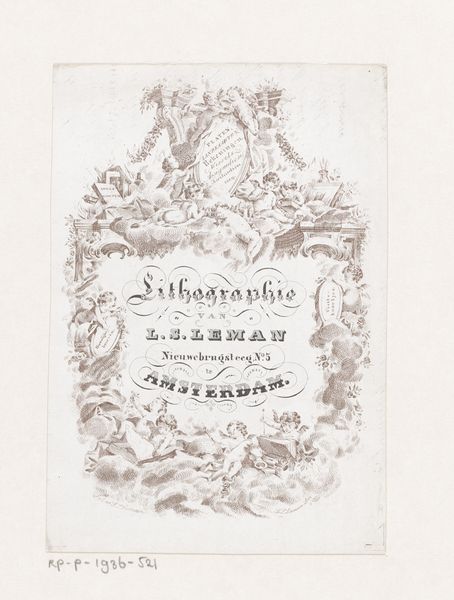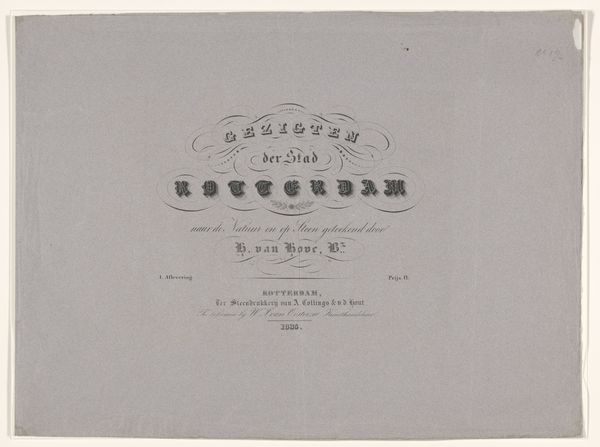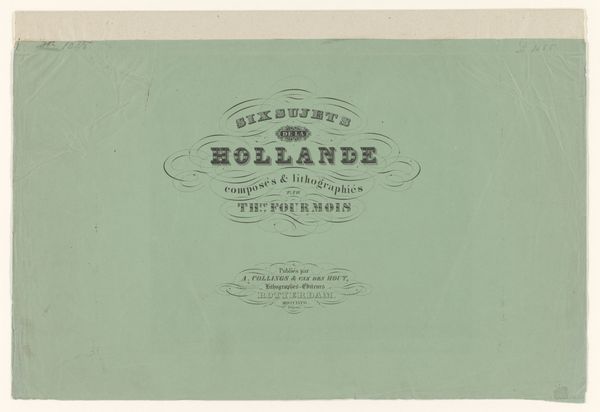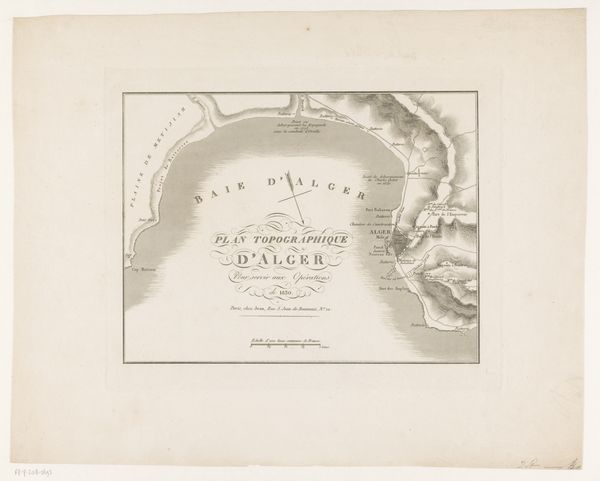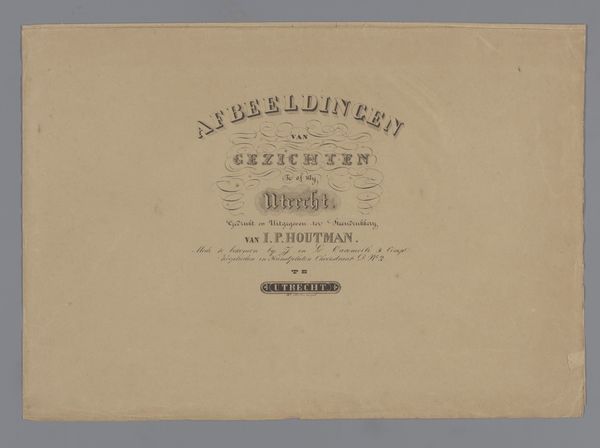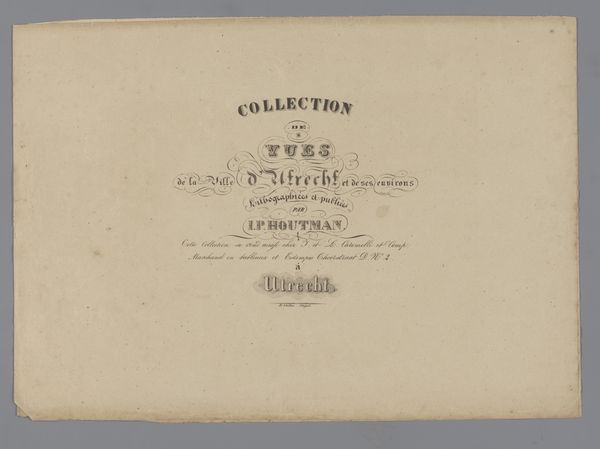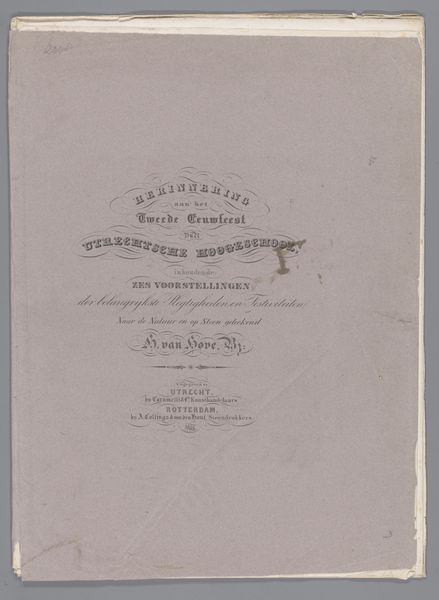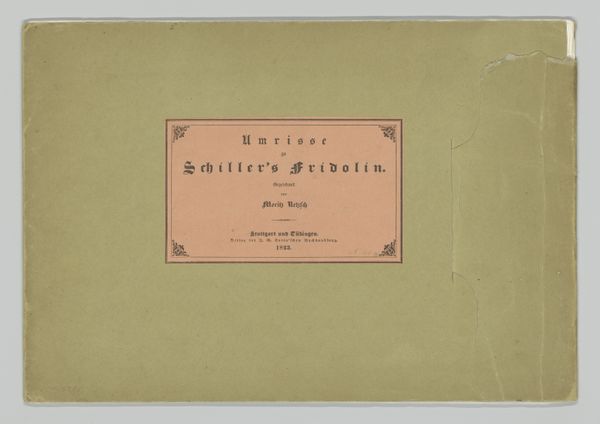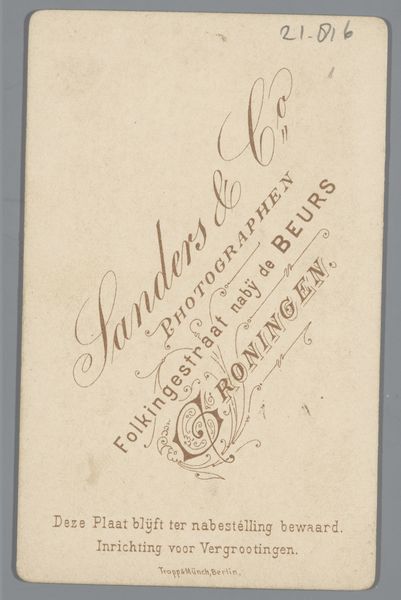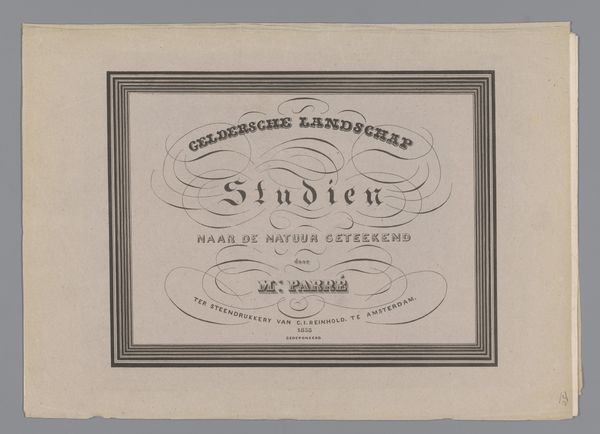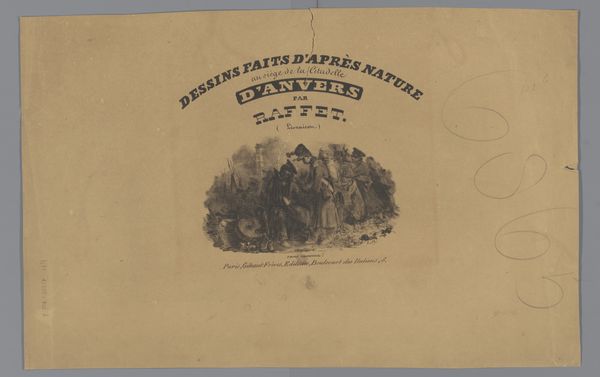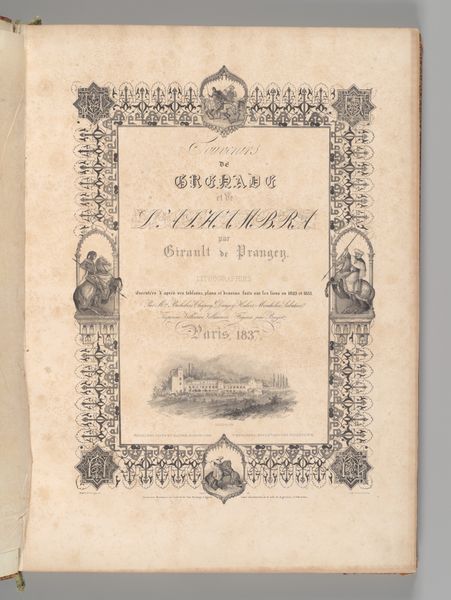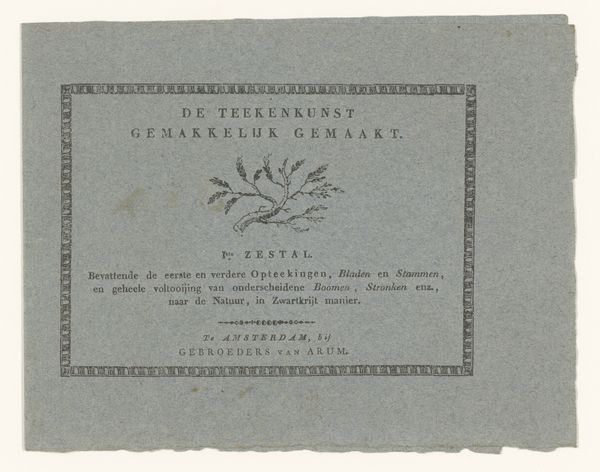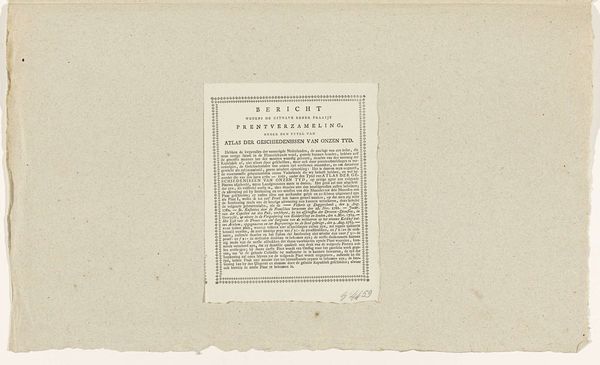
Omslag voor: Vues Pittoresques du Royaume des Pays-Bas 1831
0:00
0:00
graphic-art, print, typography, engraving
#
graphic-art
# print
#
typography
#
romanticism
#
engraving
Dimensions: height 325 mm, width 495 mm, height 650 mm, width 495 mm
Copyright: Rijks Museum: Open Domain
Curator: This engraving before us, dating back to 1831, serves as the cover for "Vues Pittoresques du Royaume des Pays-Bas" – picturesque views of the Kingdom of the Netherlands. It is the work of Barend Cornelis Koekkoek, a notable figure from the Romantic era. Editor: It’s deceptively simple, isn't it? A series of ornate letterings contained within linear flourishes. A somewhat rigid structure overall, especially given its Romantic associations, but not unattractive. It almost seems like it promises a world that's idealized but meticulously rendered. Curator: Indeed, that tension between the free-flowing Romantic spirit and Neoclassical precision is quite present. The typography is clearly the dominant element, a deliberate act given the sociopolitical atmosphere after the Belgian Revolution the year before, one year after Belgium seceded. The Dutch identity was seeking representation at the time and found its expression through such meticulously rendered Romantic art that idealized the national territory. Editor: Right, I can appreciate how this cover contributes to nation-building visually, then. If we ignore the title for a moment, what we have here are delicate wisps and symmetrical patterns creating a unified form. The lettering itself functions more as texture rather than pure text, woven tightly with that bordering contour of engraved lines. It almost suggests the act of unification as aesthetic rather than literal. Curator: Very astute. Each swirling embellishment is meticulously placed, resulting in an integrated image. What could have been dry information transforms into something akin to landscape itself, suggestive of picturesque and cultivated scenery. Think of those carefully planted forests designed for aesthetic rather than economic purposes. Editor: And there is that subdued tonality throughout…a near monochrome with incredibly subtle gradations achieved purely through linework. Perhaps alluding to an idealized vision filtered through the lens of memory or nostalgia. The crisp lines give the entire artwork an undeniable crisp, refined presence. Curator: I think you've really illuminated Koekkoek's talent and the nuances of this artwork that exists as the container of artwork itself, during a period of redefining national identity. Editor: And you have deftly guided us through its context and compositional strength. It’s these small works that hold so much, sometimes speaking louder than the larger paintings.
Comments
No comments
Be the first to comment and join the conversation on the ultimate creative platform.
